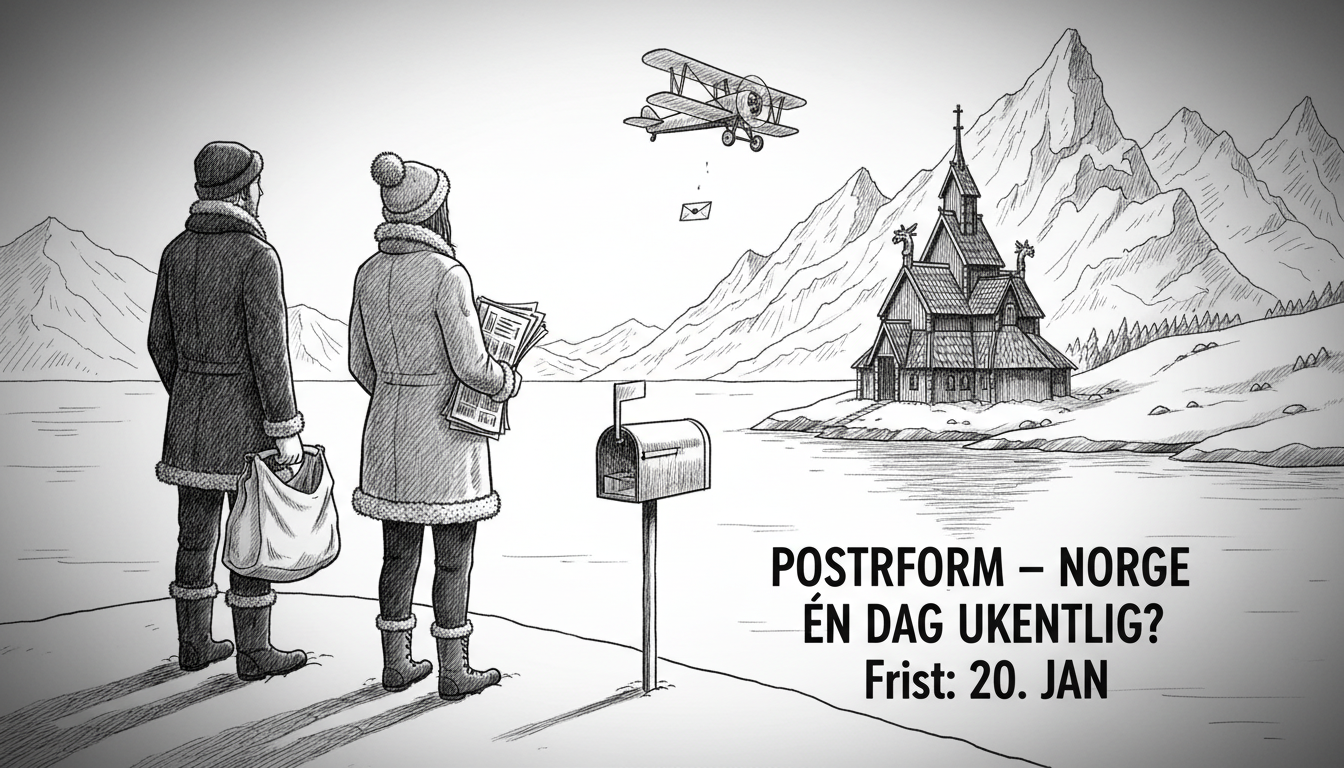The Norwegian government plans to slash postal delivery services to just one day per week. This dramatic reduction responds to changing communication patterns across the country. Officials announced the proposal through the Ministry of Transport.
Transport Minister Jon-Ivar Nygård explained the reasoning behind the postal service overhaul. People receive fewer letters and paper newspapers through their mailboxes now. Package deliveries have increased substantially instead. The government wants to maintain reliable postal services nationwide while adapting to modern needs.
This postal reform would save the state over one billion Norwegian kroner annually. The savings come from reduced operational costs and streamlined logistics. Norwegian postal workers would see significant changes to their delivery schedules and routes.
An independent postal committee delivered recommendations in December. Their report emphasized the continued importance of newspaper distribution. The government supports this conclusion despite reducing overall delivery days. Newspapers would receive special protection under the new system.
Newspaper delivery would continue at least three days per week under the proposal. This compromise acknowledges the unique role newspapers play in Norwegian society. Many rural communities still rely heavily on printed newspapers for local information.
The proposed changes to Norway's postal law now enter a public consultation phase. Stakeholders and citizens have until January 20 to submit feedback. This consultation process represents standard procedure for major legislative changes in Norway.
Norwegian postal services have evolved significantly over the past decade. Digital communication replaced much personal and business correspondence. Online shopping created massive growth in package delivery volumes. The postal system struggles to balance these competing demands within its current framework.
This reform reflects broader trends across Nordic postal services. Sweden and Denmark implemented similar reductions in recent years. Norway now follows this regional pattern of adapting postal services to digital realities.
The changes would particularly affect elderly residents and rural communities. These groups often maintain stronger connections to traditional mail services. The government acknowledges these concerns but emphasizes fiscal responsibility.
Postal workers unions will likely scrutinize the proposal carefully. Job security and working conditions remain central concerns. The consultation period allows all parties to voice their perspectives before final decisions.
Norway maintains one of Europe's most extensive postal networks despite its challenging geography. Mountainous terrain and remote islands complicate delivery logistics. The government insists service quality will remain high despite reduced frequency.
International readers should understand Norway's commitment to universal service. Even with reduced delivery days, the postal service must reach all addresses nationwide. This principle distinguishes Nordic postal systems from purely commercial operations.
The proposal represents pragmatic adaptation rather than service abandonment. Norway continues investing in postal infrastructure while adjusting to economic realities. The final legislation will likely reflect compromises between cost savings and service preservation.

